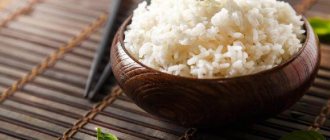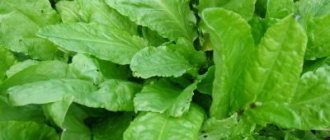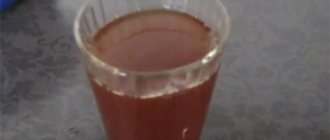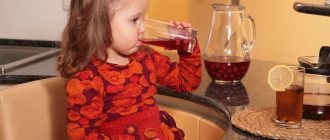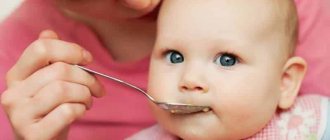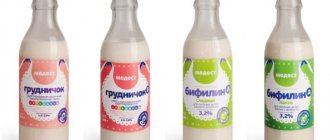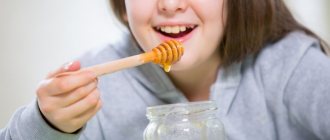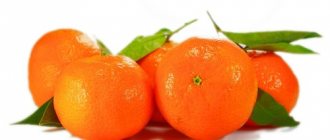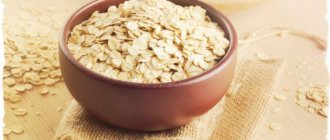Is jelly good for children?
We can talk about the benefits of jelly for a very long time. It is useful not only for adults, but also for children.
The benefits of jelly are as follows:
- The unusual starchy composition of jelly envelops the walls of the child’s stomach, which helps protect the baby’s stomach from damage by new, maybe even heavy, food.
- The fiber content helps relieve constipation (with not too much starch content).
- Kissel helps to improve the functioning of the stomach during dysbacteriosis, improve the functioning of the digestive system, and cleanse it of harmful microorganisms and harmful toxins.
- The starch content helps to maximize the preservation of the beneficial properties of the berries and fruits from which the jelly is prepared.
- For children with low body weight, the calorie content of jelly can contribute to weight gain.
- Kissel has an anti-inflammatory effect.
- The composition of jelly is able to remove excess cholesterol from the body.
IMPORTANT: Depending on the composition of the jelly, its healing properties also change.
- Kissel has a general strengthening effect, tonic, and helps in the fight against hypovitaminosis and vitamin deficiency.
- Kissel helps cope with colds. For example, cranberry and raspberry.
Along with the benefits of jelly, it is worth mentioning cases when it is better to limit its use or exclude it from the diet altogether:
- Kissel is not recommended to be given to overweight children, because High carbohydrate content will only contribute to greater weight gain.
- Kissel should be limited in the diet of children who suffer from diabetes or who have borderline blood sugar levels. You can only opt for oatmeal jelly without sugar.
- You should not give children jelly, which contains berries and fruits that can cause allergies in the child.
- Industrially produced jelly in the form of briquettes and powders with questionable composition should be excluded from the child’s diet.
Kissel at home
Optimal age
You should start offering jelly drink to your baby from the age of six months. For children under 10 months of age, it is better to give a liquid drink. Children from 10 months can be switched to drinking a thicker consistency.
It is worth remembering that jelly based on cherries and blueberries is allowed to be given to children over 1 year of age. Rowanberry drink should be offered to a child from 2 years of age.
For babies under 1 year of age, it is recommended to cook jelly:
- liquid;
- immediately before drinking;
- from those products that already make up the crumbs’ menu;
- without adding unfamiliar berries and fruits, as well as sugar.
When can you give jelly to a child, from what age?
Some experts say that jelly can be introduced into a baby’s diet as early as six months , however, it is worth adhering to some rules so that the baby drinks jelly with pleasure:
- This drink can cause constipation, so it should be administered under strict supervision of the child's reaction to the drink.
- It should also be noted that jelly can be prepared for such young children only from products already familiar to the baby, so as not to provoke allergic reactions.
- The drink should be of a fairly liquid consistency so that the child does not have difficulty drinking it.
- Kissel should only be fresh.
- It is worth remembering the age restrictions for some products; for example, blueberry jelly should only be given to children closer to one year.
- For jelly, you should choose berries and fruits that grow in our latitudes.
- To prepare jelly for a child under one year old, it is better not to use sugar, or use it in very limited quantities.
- The introduction of jelly, like any other complementary food, should begin with a few drops per day and observe the reaction.
IMPORTANT: Children under one year of age should be given jelly no more than twice a week.
After one year of age, children can be given jelly more often, and a wider range of fruits and berries can be used to prepare it.
Kissel can be given to children up to one year old
When to start offering jelly to your baby
Let's consider at what age can this drink be introduced into the diet of children. It is advisable to give it no earlier than the baby is 6 months old, when his digestive system is a little stronger. To a small child feeding on his mother's breast milk, it will seem like coarse and heavy food, causing discomfort in the small ventricle.
How often can jelly be given to children is a reasonable question. To avoid constipation, you need to give it to your baby about twice a week. It is optimal to give it in the morning, as the drink is high in calories. If given before bedtime, the baby may experience insomnia.
How to cook starch jelly for a child with blueberries before and after one year?
Blueberry jelly can improve vision, the functioning of the gastrointestinal tract, and can also overcome various types of infections. Blueberry jelly can also relieve a person from diarrhea.
To prepare blueberry jelly you will need:
- 2 liters of water
- 300 g blueberries
- 4 tbsp sugar (the amount of sugar can be increased or decreased)
- 4 tbsp starch (at the rate of 2 tablespoons of starch per 1 liter of water)
To prepare blueberry jelly you need:
- Bring 2 liters of water to a boil, then add 200 g of blueberries and sugar.
- Boil the drink over low heat for no more than 10 minutes.
- Meanwhile, in a separate bowl, dilute the starch in cold water to the consistency of liquid sour cream. Constantly stirring boiling water with blueberries, pour in starch in a thin stream - this will help avoid the formation of lumps.
- Leave the jelly to simmer over low heat for about two minutes. The drink should be stirred constantly.
After the jelly is ready, you should cool it a little and serve it to the child.
Blueberry jelly is the best remedy for diarrhea
The benefits of oatmeal broth
The beneficial properties of oatmeal are countless:
- Oats contain a lot of vitamins (C, A, E, K, B), which support the healthy condition of the skin, hair, nails, and mucous membranes.
- Oatmeal contains a lot of fiber, which improves intestinal function.
- Antioxidants in rolled oats remove toxins and waste from the body and strengthen the immune system.
- Hercules porridge contains many carbohydrates and amino acids necessary for the growth of a child.
Despite all the “pros”, this drink still has “cons”:
- Contains gluten, which can cause allergies in children. Until approximately 6 months of age, children do not have enzymes in their bodies that break down this complex protein. If you give your baby oatmeal before 6 months, the gluten contained in it will not be absorbed, which can provoke an allergic reaction.
- If oatmeal infusion is abused, the child's stool can become very weak, which can lead to the risk of dehydration. Therefore, when giving a child oatmeal, it is necessary to observe the measure.
There is a lot of discussion about at what age a newborn can try oatmeal. We would like to remind you that gluten-containing cereals (semolina, oatmeal, wheat) are introduced into complementary foods for a child no earlier than 7 months. Oatmeal broth also contains gluten, so we do not recommend it for early introduction into the baby’s diet, especially if the baby suffers from allergies.
The ideal age for the first try of oatmeal broth is 7-8 months of age. Even if a child under 6 months has constipation, oatmeal broth should not act as remedy number 1. On the modern market there are many different remedies for safely combating constipation in infants. If you have problems with stool, as well as underweight and lack of milk, first of all, you need to contact your pediatrician. If you give a rolled oats drink too early, you must get the approval of your pediatrician, otherwise you risk the health of your baby!
The decoction should be introduced into complementary feeding for an infant in the same way as other products - to a completely healthy child, in the interval between vaccinations, in the first half of the day, starting with 0.5 teaspoon, observing the body's reaction throughout the day. If this is not available, gradually increase the daily dose to approximately 50 ml per feeding. It is better to find out the maximum volume from your pediatrician, because... Each child has individual characteristics.
Please note that it is advisable to give oatmeal decoction to the baby as complementary foods no more than once a day, 2-3 times a week, alternating with complementary foods from other products. And as a supplement, oatmeal broth should be given to infants only on the recommendation of a doctor!
Cranberry jelly recipe for children under and after one year of age?
Cranberry jelly helps children very well in fighting viruses during colds and flu.
To prepare cranberry jelly you will need:
- 2 liters of water
- 300 g cranberries
- 6-7 tbsp. sugar (the amount of sugar should be adjusted at your discretion)
- 4 tbsp. starch
To prepare cranberry jelly you need:
- Wash the cranberries, dry them, chop them in a blender, or rub them through a sieve.
- Bring water to a boil, add cranberry mixture and sugar. Leave to simmer over low heat for about 15 minutes.
- Take a glass of the broth, cool it to room temperature, and then dilute the starch in it.
- Bring the drink to a boil again, and then, stirring constantly, pour in the starch-cranberry mixture in a thin stream. Boil the drink over low heat for about 2 more minutes.
After cooking, the jelly should be cooled slightly, and only then served to the child.
Thick cranberry jelly
What ailments will jelly relieve?
Is jelly good for children's bodies? Undoubtedly! With its help, our grandmothers and great-grandmothers successfully cured children of various illnesses and ailments. For example, cranberry jelly was always given to those with a cold. And those who were bothered by their tummy were always given a viscous oatmeal drink.
By the way, oat jelly was called “Russian balsam” for its healing properties. It perfectly relieves pain syndromes, envelops the inflamed walls of the gastric mucosa, and promotes a speedy recovery. And today, despite the abundance of all kinds of medications, this is the first remedy that is prescribed to children for diarrhea and gastritis, liver and kidney diseases.
A number of recent studies have shown that jelly helps eliminate toxins and heavy metals from the body. For example, a blueberry drink will help with food poisoning and intestinal infections accompanied by gastrointestinal disorders. When a child has anemia, one of the first remedies, which is effective and safe, is apple jelly.
Apple jelly for children up to one year and after one year
Apple jelly is a storehouse of vitamins. Apple jelly helps improve the functioning of the gastrointestinal tract, helps with hypovitaminosis and vitamin deficiency.
To prepare apple jelly you will need:
- 2 liters of water
- 6 apples
- 6 tbsp. sugar (the amount of sugar should be adjusted depending on the sweetness of the apples)
- 4 tbsp. starch
To prepare apple jelly you need:
- Place water on the stove and bring to a boil.
- While the water is boiling, you need to peel the apples, remove the seeds and membranes, and then grind them in a blender, or grate them, or cut them into pieces (it all depends on your preferences).
- Add apples to water and bring to a boil.
- Meanwhile, dilute the starch in cold water until smooth, and as soon as the drink boils, pour it in in a thin stream. In this case, the jelly should be stirred slowly to avoid the formation of lumps.
- The jelly should boil for about two minutes.
After the jelly is ready, you should give it time to cool, and then you can serve it to your child.
Apple jelly for children
Basic properties and effect of the drink
Frozen berry jelly is one of the most popular drink options. Children can be allowed to drink it at any time of the year, since frozen berries can be purchased in many supermarkets. However, this drink should not be given to a one-year-old child. It is better for him to prepare a drink from fresh berries, in the usefulness and effectiveness of which his mother is completely confident.
To prepare jelly, you can take various berries:
- Blueberries. An excellent remedy for indigestion and various gastrointestinal problems. However, you should not give jelly to a child under 10 months, as blueberries can cause allergies in the baby.
- Blackcurrant. Saturates the body with vitamins and strengthens the walls of capillaries.
- Rowan. It has a laxative effect and helps with systematic constipation. Jelly made from this ingredient should not be given to children under two years of age.
- Raspberry. It contains vitamin C. The berry helps with colds.
Milk jelly is an ideal option for babies under 12 months of age (provided that the child does not have individual lactose intolerance). The benefits of jelly made from milk and starch are known to many mothers. Both types have a beneficial effect on the baby’s stomach, as well as on the intestines. In addition, it enriches the young body with microelements necessary for its normal development.
Recipe for baby milk jelly:
- 2 tbsp. cow's milk;
- 3 tbsp. l. Sahara;
- 3 tbsp. l. potato starch;
- 0.2 tsp. vanillin.
Apple jelly is a necessary drink for anemia and vitamin deficiency. It is not only very tasty and tender, but also healthy, as it enriches the body with many vital vitamins. Since apples are the least allergenic foods, you can give a drink made from them even to six-month-old children.
To prepare a drink from apples, you need:
- 2 apples, peeled and finely grated;
- 2 tbsp. water;
- 1 tsp. starch, dilute in cool water;
- sugar to taste.
Oatmeal jelly will help cope with gastrointestinal problems. It gently envelops the walls of the stomach and saturates the body with beneficial vitamins. Starch jelly with oatmeal has the following recipe for a child:
- 1 tbsp. oatmeal (fill with warm water and leave for 10 hours);
- 1 tbsp. cow's milk;
- 0.2 tsp. salt;
- sugar (to taste).
Cranberry jelly is good to give to children in the off-season during colds. It contains a large amount of vitamin C. This drink is an excellent way to boost immunity.
To prepare it you will need the following products:
- 100 g frozen or fresh cranberries;
- 300 ml water;
- 1 tsp. starch;
- 1 tsp. Sahara.
Raspberry jelly for children
Raspberry jelly is a delicious and very healthy drink. Raspberry jelly can help cope with colds.
To prepare raspberry jelly we will need:
- 2 liters of water
- 2 tbsp. raspberries
- 7 tbsp. sugar (sugar should be added at your discretion)
- 4 tbsp. starch
To prepare raspberry jelly you need:
- Place water on the stove and bring to a boil.
- In the meantime, rinse the raspberries; if necessary, the berries should be rubbed through a sieve or crushed with a blender to get rid of the seeds (the required consistency depends on the age and preferences of the baby).
- As soon as the water starts to boil, add raspberries and sugar.
- Then dilute the starch in cold water to a homogeneous consistency, and immediately pour the starch into it in a thin stream, constantly stirring the drink.
- Let the jelly simmer for no more than two minutes, then turn off.
Once the drink is ready, you should give it time to cool a little, and then you can serve it to your child.
Raspberry jelly
How to cook
To avoid problems for babies’ tummies due to the introduction of jelly into the diet, mothers should know some cooking rules:
- You should always prepare the drink before drinking it. It is forbidden to store jelly in the refrigerator or reheat it, as this may contribute to the development of bactericidal infections;
- It is best to cook from one ingredient, for example, only apples or cranberries;
- For babies under 12 months, it is not recommended to add regular white sugar to the drink;
- A child under one year of age must be given only a liquid drink with a small starch content, otherwise constipation may occur;
- The beneficial effect that jelly has on the body depends on the components included in its composition. It is imperative that they are fresh and do not cause individual intolerance in the baby. Therefore, when cooking jelly, you can only use ingredients that are already present in the child’s diet. You should not make a drink from exotic fruits;
- After pouring starch diluted in cold water, you must stir it continuously until it thickens, otherwise lumps may form.
To answer mothers how to cook jelly for a child under 1 year old, let us remind you that it must be prepared, most importantly, from fresh berries or fruits, oatmeal or cow's milk. To thicken, use a small amount of starch (about 1-2 tsp per liter of water). Instead of sugar, it is best to add fructose, sweet berries or honey. In general, there are many recipes for starch jelly intended for children under the age of one year.
Frozen berry jelly for children
Making jelly from frozen berries is practically no different from making jelly from fresh berries. Frozen berries can be thawed first, or you can put them in water and frozen - it all depends on the type of berries and the desired consistency of the jelly.
If you want to get a homogeneous drink, you don’t have to limit yourself to chopping the berries with a blender, using a sieve, etc. You can first mash the berries, then throw them into water, bring to a boil, strain the resulting broth, and only then add sugar and starch.
In addition to the fruits and berries discussed in the sections above, you can make jelly from:
- Frozen rowan. Rowan will help cope with liver diseases; it is a choleretic and laxative.
- Frozen cherries. Cherry is a powerful antiseptic and should be used for inflammatory processes.
- Frozen currants are a storehouse of vitamins. Currants improve the functioning of capillaries.
Frozen berries for jelly
What is jelly and how is it useful?
In stores you can find packages of ready-made jelly, which only needs to be diluted in water and prepared according to the recipe indicated on the package. Most often, the contents of these briquettes are far from natural; dyes, preservatives and other components that are not particularly useful for the child’s body are generously added to them. Therefore, giving such a product to a child of the first year of life is categorically not recommended.
Real, homemade jelly is made from fruit or berry raw materials with the addition of starch and sugar (fructose or honey). You can also give babies a drink based on oatmeal (rolled oats) flakes and milk. In general, jelly can be made from almost anything - from rhubarb and pumpkin to peas and rye flour, but such experiments should be left until your child grows up a little.
Due to its thick consistency, the drink envelops the walls of the esophagus and stomach, protecting and restoring the mucous membrane of the gastrointestinal tract. Starch itself is a good natural adsorbent, capable of absorbing harmful substances and removing them from the body. Therefore, jelly is often recommended for diarrhea and poisoning in children. And the fruits and berries in the drink will willingly share vitamins and minerals with your baby, protecting and restoring the immune system. Also, jelly is often prescribed to children who are not gaining weight well - the drink helps to cope with this problem and not to overfeed the child.
Oatmeal jelly recipe for children up to one year and after one year
Oatmeal jelly can strengthen a child’s body and fill it with essential vitamins and microelements. Oatmeal jelly improves the functioning of the gastrointestinal tract, relieves gas formation and intestinal colic, and is indicated for dysbacteriosis.
To prepare oatmeal jelly you will need:
- 1 tbsp. oatmeal
- 1.5 tbsp. water
- 1 tbsp. milk
- 2 tbsp. Sahara
- a pinch of salt
To prepare oatmeal jelly you need:
- Pour water over the oatmeal, cover with a lid, and leave to swell for about six to eight hours (this can be done overnight).
- In the morning, strain the resulting infusion and then squeeze it out.
- Add the required amount of milk, salt and sugar, and then put it on the stove and cook the jelly until the desired thickness.
After the jelly has cooled, it can be served to children.
Oatmeal jelly
Contraindications
Kissel is not recommended for use if:
- systematic constipation;
- diabetes mellitus;
- pathologies of the development of the large intestine;
- obesity;
- allergies or individual intolerance to one of the ingredients included in the composition.
Mothers are wondering: is it possible to give jelly to a child when he has diarrhea? The unequivocal answer to this question is “yes, it is possible” and even necessary. This drink has a thick consistency that envelops the walls of the digestive tract and protects the gastric mucosa. In addition, it is useful to give liquid jelly in small quantities for constipation.
Kissel is an approved drink for vomiting and poisoning. This drink can normalize the proper functioning of the gastrointestinal tract. When vomiting, a drink made from any fresh fruit or berries, as well as milk or oatmeal, is good. The main thing is that the resulting jelly has a viscous consistency.
Kissel is able to have a beneficial effect on the human body, which is why it is a very popular drink. Therefore, many parents are interested in the question: at what age can this drink be given to their baby? And what products are best to prepare it from?
Milk jelly for children
Milk jelly is an incredibly delicious jelly. Beneficial for everyone except those who are allergic to cow's milk.
To prepare milk jelly we will need:
- 2 tbsp. milk
- 2 tbsp. starch
- 2 tbsp. Sahara
- a pinch of vanillin (optional)
- pinch of cinnamon (optional)
To prepare milk jelly you need:
- Bring the milk to a boil with constant stirring; when it forms, remove it.
- Dissolve starch in cold milk, pour it into boiling milk in a thin stream, add sugar.
After preparation, the drink should be cooled slightly, vanillin and cinnamon should be added to it, and then it can be served to children. You can also add nuts, dried fruits, jam, syrup, etc. to milk jelly.
Dessert - milk jelly with jam and nuts
Children's jelly recipes
We offer you several delicious recipes for children:
Milk jelly
- Pour 2 cups of milk into an enamel pan and put on fire.
- Dilute 2 tbsp in a small amount of cold water. spoons of corn starch.
- Add 50 g of sugar to the milk and bring to a boil.
- With constant stirring, add starch diluted with water into the milk.
- Cook until thickened, stirring constantly.
Apple jelly
- Take 2 apples, wash and peel them.
- Grate the fruits on a fine grater.
- Squeeze the juice from the grated apple mass.
- Pour water (2 cups) into the apple mixture, bring to a boil and cook for 10 minutes.
- Strain and pour the resulting broth into another pan. Boil.
- Dilute 1 teaspoon of starch in 1/3 cup of cold water.
- Pour starch water into the boiling broth, let it thicken with constant stirring.
- Remove from heat, pour in apple juice, cool.
Cranberry jelly
- Take 100 g of washed and selected cranberries. Squeeze out the juice using a sieve.
- Place the remaining pulp in an enamel pan and add three glasses of water. Bring to a boil, cook for 5 minutes.
- Strain the cooked berries. Add a pinch of citric acid to the broth to preserve color.
- Boil the resulting broth, add 3-4 tbsp. spoons of sugar.
- Dilute 1.5 tbsp in 1/3 cold water. spoons of starch.
- Pour the starch liquid into the boiling jelly. Cook, stirring, until thickened.
- Pour previously squeezed juice into the finished drink and cool.
Oatmeal jelly
- Take 1/3 cup of oatmeal and pour 1 cup of warm water over it. Leave to infuse overnight.
- Drain the resulting liquid, add 1 glass of milk, salt and sugar to taste.
- Brew the drink with constant stirring until completely thickened. Cool.
Banana jelly
- Grind 1 ripe banana into a puree.
- Add 0.5 tbsp to the puree. spoons of sugar.
- Pour 1 cup boiling water and stir.
- Close the lid tightly and let sit for 30 minutes.
This recipe does not use starch. The drink will help cure severe coughs and is useful for bronchitis.
From frozen berries
- Place 100 g of frozen berries (strawberries or others) in boiling water (300 ml) without defrosting.
- Bring the drink to a boil, remove the berries with a slotted spoon, and reduce the heat. Using a blender, puree them.
- Dilute 1 tbsp in 1/3 cold water. spoon of starch.
- Pour the starch liquid into the boiling drink. While stirring, add strawberry puree and 1 teaspoon of sugar and cook until thickened. Cool.
Contraindications
Along with many beneficial properties, the drink also has a number of contraindications. So, for whom jelly is not recommended:
- children who experience frequent constipation have pathology of the colon;
- overweight children;
- suffering from diabetes mellitus;
- In order not to overload their digestive system, infants should not be given a drink that is too thick.
Useful tips
Try to prepare a drink for babies under one year old and even preschoolers only from natural products, without using store-bought mixtures. Be sure to observe how your baby reacts to new complementary foods; give him no more than 1 teaspoon of a drink made from new ingredients.
By the way, starch is easy to prepare yourself. Peel 1 large potato and grind it in a blender. Place the resulting pulp in gauze. Tie the cloth and let the potato pulp sit on a clean plate for a while to release the starch.
Taking care of the baby's health is the main responsibility of parents. Both his well-being and his development depend on how high-quality and healthy the child’s nutrition is. Include foods and dishes recommended by pediatricians and nutritionists in your children's diet, and let your baby grow up healthy!
Click Share and make your friends happy!
Banana cough jelly for children
Banana jelly can help a child get rid of not only a cough, but also bronchitis. To prepare this miraculous remedy you will need:
- 1 banana
- 1 tbsp. boiling water (water)
- 1 tbsp. Sahara
IMPORTANT: For medicinal purposes, this drink should be consumed warm, half a glass every 2 hours.
To prepare banana jelly you need:
- Mash the banana pulp until smooth. You can use a blender.
- Carefully place the resulting mass with sugar
- Pour a glass of boiling water, cover with a lid and let it brew for about 30 minutes.
- Then the resulting drink can be filtered and given to the child.
Banana jelly
What you need to know
- The product contains various vitamins, such as vitamin B, which ensures the proper functioning of the muscular system.
- Vitamin A, which helps develop the body's defenses against external influences.
- Doctors recommend the drink to those children who are underweight. This drink is high in calories, as it consists of proteins, fats and carbohydrates. Therefore, if the child is overweight, it is better not to give jelly.
- This delicacy is not only tasty, but also has medicinal properties. You can use jelly for diarrhea, because it envelops the intestines and at the same time soothes it.
- The treat also helps get rid of a cough; a banana drink is especially good for this.
Cooking recommendations
- You should cook only from products that are familiar to the baby, so as not to cause allergies.
- You should start giving jelly a few spoons at a time.
- The drink should be given warm and liquid so as not to make it difficult to drink.
- There is no need to leave the treat until next time, it is only given fresh, so try to cook it in small proportions.
- Sugar is present in many recipes, but you should limit its addition, especially when using fruits and berries.
- The drink can cause constipation, so monitor your baby's reaction.
- You can cook jelly from corn starch, so it will turn out more tender.
Doctors say that you should not give your child ready-made powdered jelly. It contains dyes and various additives that will be harmful to a small organism.
Kissel after poisoning for a child recipe
After poisoning, jelly is simply necessary for any body.
Kissels, due to their viscosity, are able to improve the functioning of the stomach and intestines. This miraculous drink can even replace one feeding of a child, for example, dinner.
Absolutely any jelly is suitable for restoring the body after poisoning, because the main thing is its viscosity.
Kissel after poisoning
Preparation of hercules decoction
On the water.
The safest way to prepare oatmeal decoction for children under 1 year of age is with water. The cooking algorithm is as follows:
- Before cooking the oatmeal broth, sort and rinse the oatmeal.
- Pour 1 tablespoon of flakes into 100 ml of cold water.
- Place the bowl with the cereal over low heat and cook for 30 minutes, stirring occasionally.
- Let the broth cool slightly.
- Strain the resulting mixture through a sieve or cheesecloth.
- Serve the broth to your child without adding sugar, salt or other ingredients.
- Before preparing the decoction, sort and wash the flakes. If desired, grind them with a blender.
- Boil 200 ml of milk and add 1 tablespoon of cereal.
- Cook the mixture for 20-30 minutes over low heat.
- At the end of cooking, pour another 50 ml of milk into the pan to get rid of any lumps that have formed.
- Strain the mixture through a sieve.
- Add a little sugar if necessary.
Is it possible to use jelly for a child with diarrhea?
Due to the fact that during diarrhea the body, and in particular the gastrointestinal tract, is weakened, you should not overload it with work. Nutrition during diarrhea should be quite thoughtful.
Jelly is perfect for these purposes. Kissel is a very easy to digest product, and at the same time very nutritious.
Starch acts as a sorbent in jelly, which is able to absorb and remove dangerous toxins from the body.
In addition to the enveloping properties of jelly, it is also a sedative for the gastrointestinal tract.
Kissel - a tasty remedy for diarrhea
Drink jelly with pleasure, cook it for your children. Don’t get sick!
Useful properties of jelly
Kissel is traditionally prepared using berries and fruits; there are also recipes based on cereals. The drink allows you to saturate the body with vitamins and microelements, activate its protective properties and improve immunity.
If a child is underweight, his diet must include jelly. The drink will also be very useful for children who have digestive problems: diarrhea or constipation.
The beneficial properties of jelly are largely determined by the components included in its composition. Therefore, it would be useful to familiarize yourself with the main popular components from which a drink for children is traditionally prepared.
| Cooking Ingredient | Beneficial properties and effects on the child’s body |
| Apple | Apple jelly is one of the first to be introduced into a baby’s diet, due to its low allergenicity. Is a diet drink. It will be useful for seasonal hypovitaminosis. Prevents the development of anemia. Eliminates diarrhea. |
| Blueberry | Blueberry jelly will help with diarrhea and constipation. It will be useful for infectious diseases. Helps improve vision |
| Cherry | Has antiseptic properties. Recommended for inflammatory diseases of the respiratory system. |
| Currant | Strengthens capillaries well. |
| Cranberry or raspberry | Natural source of ascorbic and acetylsalicylic acid. Effective for colds. |
| Rowan | Has a mild laxative and diuretic effect. It will be useful for liver and kidney diseases. Eliminates bile stagnation. |
| Hercules | Particularly useful for gastrointestinal diseases. It has tonic and restorative properties. Recommended for diarrhea. Contains useful minerals and vitamins. |
An essential component of the drink is starch; it contains minerals and vitamins in small quantities. Nevertheless, starch, especially of natural origin, is a very valuable product for the child’s body.
Thanks to starch, jelly acquires a special jelly-like consistency during the cooking process, which helps normalize digestion. Vitamin PP, which is part of starch, is an indispensable participant in all reduction and oxidation processes. Helps convert fats and sugars into energy.
Starch also contains calcium, phosphorus, sodium and potassium. And if you combine the properties of each of the listed components, then the benefits of jelly are as follows:
- promotes the removal of excess fluid from the body, reduces intoxication in inflammatory diseases;
- strengthens the immune system;
- nourishes the body with energy and ensures normal digestion;
- reduces the acidity of gastric juice;
- easily digestible without creating a burden on the digestive organs.
In what cases is it necessary to refuse jelly?
If this drink is quite justified in the diet of schoolchildren, then for children under one year old there are a number of restrictions. It should not be given to children who suffer from systematic constipation or have pathologies in the development of the large intestine. It will also have to be excluded from the menu of children under one year of age who are overweight. This is not the best choice for children with diabetes or a predisposition to it. For breastfed children, thick jelly is a heavy food for the stomach, so it makes sense to reduce the dose of starch, thereby making its consistency more liquid. For children with allergies, you can select ingredients that do not cause allergies and do not exclude this drink from the diet.
To prepare a tasty and healthy jelly for a baby up to one year old, just choose high-quality fresh berries or fruits, milk, oatmeal or rolled oats and use starch to thicken their consistency a little. For infants, the best choice would be single-component formulations; for older children, the taste of the drink can be improved with the help of citrus fruits, candied fruits, and ice cream. It is important to remember that jelly is a nourishing drink that can fully replace an entire meal, so a small child should be offered it in strictly dosed doses.
Standards for the use of jelly by children
There are norms for the use of jelly for children of different ages, adhering to which mothers do not have to worry about adverse reactions in the body of their babies:
- Children less than a year old can be given jelly only 2-3 times a week in small portions.
- At the age of 1 year, you can feed babies jelly every day, but no more than once a day.
- Children aged 1-3 years are given this product every day, the serving is 100-150 ml. Children over 3 years old switch to servings of 150-200 ml.
- The drink is given warm and is best served as an afternoon snack or at lunchtime.
- If allergic reactions or abnormalities in the body’s functioning occur, reduce the dose, and if the disorders recur, remove the drink from the baby’s diet.
Consumption of jelly by children under one year of age
There is a range of products approved by doctors and which are included in the recipe for jelly for a child up to one year old. These include:
- Apples, which are not an allergen, affect the processes of hematopoiesis and prevent the occurrence of diarrhea. Apple jelly is a dietary drink that is especially necessary during periods of vitamin deficiency.
- Blueberries are the best remedy for activating visual function; they help reduce the aggressive effects of microorganisms in infectious diseases and improve the functioning of the gastrointestinal tract.
- Cherries in jelly have an antiseptic effect and also help with respiratory diseases.
- Hercules helps in normalizing digestive processes, has a tonic and restorative effect on the children's body.
- Cranberry is an excellent immunostimulant that enhances the protective properties of the child’s body. This berry improves appetite, which is especially important for weakened children.
Sometimes parents are faced with preparing healing jelly from a plant component that is rarely found in baby food, but has many valuable properties. For example, a common question is: at what months can you give jelly with rowan to a child? Doctors do not recommend including the fruits of this plant for up to a year, as they have a pronounced diuretic and choleretic effect and can cause diarrhea.
Another equally rare question is whether a child under one year old can have jelly with raspberries. Despite the value of raspberries for colds, they can cause allergies and provoke a diuretic effect. Since raspberries have diaphoretic properties, it is advisable to use them only during colds.
Doctors recommend giving babies under one year of age baby jelly - the recipe for which includes only natural products. The consistency of such a drink should not be very thick. The jelly of a 10-month-old baby may already have a denser consistency, since at this age the baby can eat from a spoon.
Sometimes mothers ask: can jelly be stored for a long time for children under one year of age? Doctors do not recommend storing ready-made baby food that was prepared at home at all. When reheated, all the beneficial qualities of the drink are lost and, as a result, the product becomes useless.
Oatmeal jelly
We offer jelly for children, the recipe of which can be used in the menu of babies up to one year of age:
- Grind 100 g of oatmeal into flour in a blender.
- Add a little sugar to the milk, add salt on the tip of a knife and add the diluted oat mixture in a thin stream.
- Boil everything, stirring constantly for 3-5 minutes.
- Give your baby a warm drink in small portions throughout the day.
Berry jelly
The method for cooking jelly from starch for a child under 1 year old will not take much of the mother’s time and will not require special culinary knowledge:
- Take 2 cups of cherries and separate the pits.
- Dilute starch (0.5 tsp) in a small amount of water.
- Pour boiling water over the finished cherries and strain the juice through cheesecloth.
- Place the squeezed berries in a container with 2 glasses of water, boil for 3 minutes, add sugar, liquid starch, squeezed juice and bring to a boil, stirring the jelly.
Apple jelly for babies
- Wash, peel and pour boiling water over one apple. Squeeze out the juice.
- Boil the pomace in 500 ml of water for 10 minutes.
- Cool, dilute 1 tbsp in one part. l. starch.
- Combine 2/3 tsp. sugar (optional), the second part of the broth and diluted starch.
- Bring everything to a boil, add apple juice and boil again.
If the jelly contains sweet fruits or berries, sugar can be omitted.
It is not important at what age a child can be given milk-based jelly, since this is the only product, with the exception of individual intolerance to milk protein by a child, that is perfectly digestible by infants.
When preparing jelly for infants, at what age starch can be added to it should also be discussed with the pediatrician. Some mothers prepare this component themselves and add it to the dish. To do this, crushed potatoes are placed in cheesecloth and the separated natural starch is collected. This product, unlike store-bought starch, should be added 2 times more than the norm specified in the recipe.
Despite the benefits that jelly brings, starch should not be given to a child who has obvious signs of obesity. Rich in carbohydrates, this component will only worsen the situation.
It is imperative, regardless of whether jelly is allowed to be consumed, at what age children can consume it and its individual ingredients - berries, milk, fruits, oatmeal, it is necessary to monitor the body's reaction after each administered portion of the product.
Cooking technology
- The main products that make up the jelly base are starch and fruits or berries. Sometimes oatmeal and milk are used in preparation.
- If it was decided to give such a drink to a baby under 1 year of age for the first time, it must be prepared as a single component. You can brew a drink based on different ingredients as your baby gets used to each of them separately.
- The starch is first mixed with cold water and then poured into the boiling composition. Then the drink is stirred until it thickens.
- A small portion of the juice should not be subjected to heat treatment. It is better to pour it in at the very end of cooking, despite what the recipe prescribes. This way the jelly will retain more vitamins and nutrients.
- When preparing drinks for small children under 1 year old, you should refrain from using sugar. You can add a little fructose instead. Under no circumstances should you use artificial sweeteners. It is better to choose a recipe that uses only fruits familiar to the child.
- The drink should be brewed in an enamel-coated container.
- After the drink has been prepared, it must be consumed immediately. To prevent the development of digestive problems, you should not store jelly in the refrigerator and then heat it.
Popular recipes
To prepare oatmeal jelly, you need to pour one third of a glass of rolled oats with warm water. In this state, the liquid must be left for 10 hours or overnight. Next, you need to drain all the water into another enamel container, and then add a glass of milk, a little salt and sugar. The pan with the liquid is placed on the fire and cooked until the jelly becomes thick. This recipe will help cope with diarrhea.
To make a milk drink, use the following recipe. Dissolve a couple of tablespoons of cornstarch in a small amount of cold water. In a separate container, boil a couple of glasses of milk, and then pour 60 grams of fructose into it. After the mixture has boiled again, starch is poured into it, the liquid is stirred until the milk jelly thickens.
Apple drink recipe for children under 1 year old. To cook, you will need to peel and grate a couple of apples. Then the resulting pulp should be squeezed out. The resulting juice is poured into a separate container, and the pulp is poured with a couple of glasses of water. The resulting liquid is placed on the stove and boiled for 10 minutes. Next, the broth is filtered and boiled again. A dessert spoon of starch dissolves in cold water. Then the starch is poured into the boiled drink, the whole mixture is stirred until thick. Then the pan is removed from the stove, and apple juice is added to it. This recipe preserves most of the vitamins found in fruits.Children under 1 year of age can be given a jelly drink a couple of times a week. For children over one year old, you can prepare such a drink every day, but it is allowed to be given no more than once a day.
For a baby 1-3 years old, one serving of the drink should not exceed 150 milliliters. The best time to drink is lunch. The drink should be given warm.
